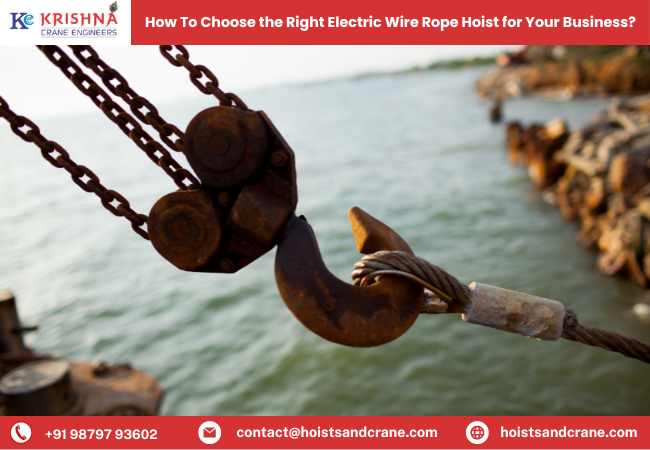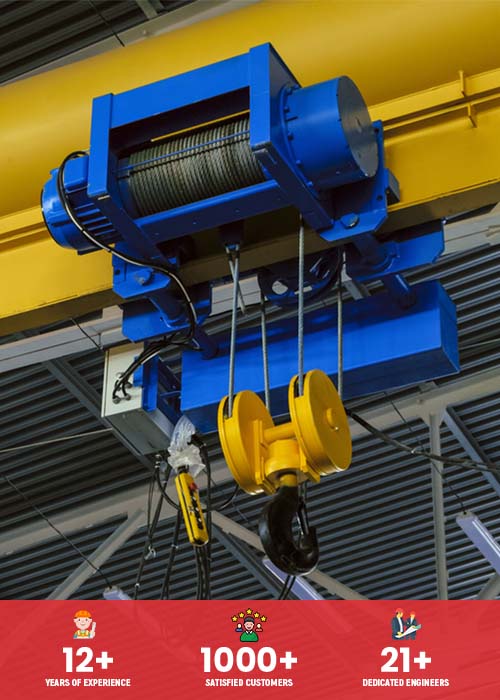How To Choose the Right Electric Wire Rope Hoist for Your Business?
Wire rope hoists are vital pieces of machinery made by an electric wire rope hoist manufacturer and are used in a wide range of industries, such as construction, manufacturing, warehousing, and logistics, for the lifting and moving of large objects. Wire rope hoists consist of the wire rope drum, hook, control system, gearbox, and hoist motor apart from other components. They are able to move and lift heavy loads in both horizontal and vertical directions. By using an electric motor to drive the wire rope, the hoisting mechanism enables controlled weight lifting and lowering.
There are different types of electric wire rope hoist available and in this article, we will discuss how you can choose the right one for your business.
Choosing the right wire rope hoist
It’s important to select the appropriate wire rope hoist for your task. Prior to making a decision, it’s critical to consider all of your options and gain a thorough understanding of the features, components, and specs of the hoist. Above all, you should be aware of the essential tasks that it must complete. When choosing, there are usually three key factors to take into account.
- Load Lifting Requirements
The requirements for load lifting are the most crucial item to keep in mind. How much weight is lifted on your site on average? It is recommended that you choose a hoist that can support loads greater than the minimal one, even though many hoists may fulfil this criteria.
When an unforeseen load rise occurs, high capacity hoists provide vital security, safety, and the capacity to carry much heavier weights if necessary. They also provide you with the assurance that your average loads won’t overtax the machinery, allowing you to finish the task worry-free. These hoists may also enable you to do your work more quickly without running the risk of damaging the equipment.
- Number of lifts
Consider how many lifts you’ll need the wire rope hoist to perform before choosing a lift. This is a crucial additional consideration since it may reduce your selections if your work requires you to execute very hard tasks. Different hoists may not be able to lift as much weight as others due to differences in the strength of their materials.
Choose equipment that can manage a lot of lifts if you know you’ll be putting a lot of strain on the apparatus or if there’s a risk you’ll need to undertake unforeseen or extra lifts. This not only protects you and other employees safe at work, but it also gives you greater flexibility should you need it.

- Future needs
It’s critical to plan ahead. You might save money up front by just purchasing the hoist that will satisfy your current needs, but you may end up paying more for a replacement later on. It makes sense to spend your money on a piece of equipment that will serve you well for many years to come in addition to fulfilling your immediate demands.
In addition to double checking your lift numbers and selecting a hoist that you know will serve you and your demands well beyond your immediate job, don’t forget to buy machinery that can manage higher load sizes than you may need.
Heavy lifting jobs are a good fit for an electric wire rope hoist. Heavy objects may be swiftly and easily lifted and moved by the machine. You can move objects more easily and effectively as a result. It helps you save a lot of labour and time, which lowers your working expenses. Electric models are beneficial for both large-scale and small-scale applications.



